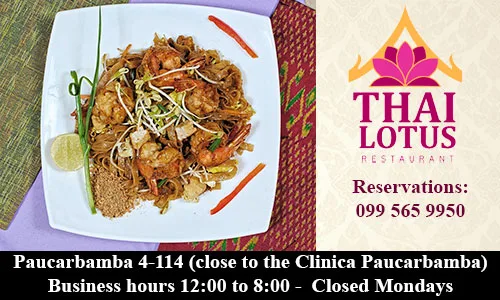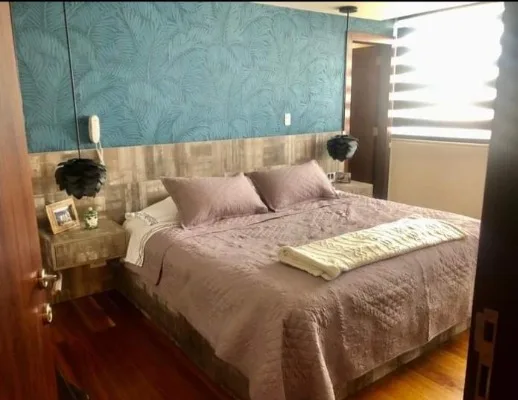ACCESS CUENCAExpats take to city streets on motorcycles and scooters
Motorcycles.
Far more than just transportation, motorcycles have always been associated with thrill-seekers and daredevils, rebels and outlaws, escapists and freedom-lovers. No mere car ever fueled the fantasies of an entire generations like the bikes ridden by Marlon Brando in The Wild One, James Dean in Rebel Without a Cause, Peter Fonda and Dennis Hopper in Easy Rider, Arnold Schwartzenegger in Terminator, and Pee Wee Herman in his Big Adventure.
Well, OK, maybe not Pee Wee Herman.  But motorcycles have always symbolized a rejection of the scheduled, segmented, and stressful lifestyle of the work-a-day world. Practically speaking, they’re cheaper to run, more flexible in traffic, easier to park, simpler to repair, harder to tow, and way more fun and cool than cars. The rumble of the engine, the wind whizzing by, the smell of the great outdoors, the responsiveness of the bike, the feel of being part of, and not just driving through, everything around you — it all has an addictive quality that’s hard for enthusiasts to kick, no matter where in the world they may be.
But motorcycles have always symbolized a rejection of the scheduled, segmented, and stressful lifestyle of the work-a-day world. Practically speaking, they’re cheaper to run, more flexible in traffic, easier to park, simpler to repair, harder to tow, and way more fun and cool than cars. The rumble of the engine, the wind whizzing by, the smell of the great outdoors, the responsiveness of the bike, the feel of being part of, and not just driving through, everything around you — it all has an addictive quality that’s hard for enthusiasts to kick, no matter where in the world they may be.
In Cuenca, thanks to the walkability of El Centro, buses circulating continuously through the city, and taxi cabs costing a couple dollars, most gringos don’t miss having motorized machines at the ready. That said, die-hard bikers still need their fix.
Take Bill Slaughter. This ex-hedge-fund-manager expat has been riding motorcycles his whole life, receiving a small bike for Christmas when he was seven. He went on to race Ducatis professionally from 1986 to 1992. “After a great six-year run,” he recalls, “I traded the Ducatis for Harleys — and a longer life.”
He lived in Cuenca for all of four months before he bought a brand new KTM 990 Adventure, even though he claims that it’s “honestly dangerous” to ride a motorcycle in Ecuador. “On the other hand, the roads and scenery are incredible. Also, I get forty miles to the gallon on the highway and around twenty-eight in the city, averaging about six dollars a week in gas. And,” the ex-racer adds, “the police can’t catch a big bike, and they don’t really try.”
Then there’s Randy Kimbler, who started riding a motorcycle at the age of 16 in Washington state. “I’ve been riding ever since,” he says, “and I’ve owned numerous motorcycles. In fact, at various times in my life, I haven’t owned a car, but I’ve never been without a motorcycle. And when I’ve owned a car, I rode my bike so often that it wasn’t uncommon for the car battery to go dead from sitting so long.”
Kimbler had lived in Cuenca even less time than Bill Slaughter when he bought his Yamaha DT175 Enduro, which he calls “a great bike for around town.” Driving a bike in Cuenca took some getting used to, because of the traffic. “Right of way has to do with who’s bigger on the road. Once you get that down, riding a motorcycle in Cuenca is great,” he says.
“The best things about it are the scenery, zooming around town in the traffic, and spending five or six dollars a month on gasoline,” Randy explains. “The worst things are the crazy redondels and the afternoon rain.”
Karen Kimbler caught the biker bug from husband Randy. At first, she says she was “terrified” of motorcycles. “As a new rider, it was very hard for me to figure out how to shift, stay upright, and turn, all at the same time,” she recalls. Eventually, Karen got the hang of it. “Then I rode every day, to work and for fun.”

Along the way, Karen and Randy discovered scooters. She explains, “A scooter was perfect for me. I didn’t have to remember to shift when turning or stopping. Just twist and go!”
Randy adds, “Scooters also have a better turning radius, and you can ride in shorts and sandals without the fear of being burned by exposed engine and exhaust pipes.”
The Kimblers belonged to a scooter club in the States and found they missed the camaraderie and the group riding. “In a group,” Karen says, “you feel a lot safer. Also, people smile, wave, and honk at all the scooters riding together. It’s a kick.”
Shopping for scooters at the Cuenca Honda dealership, they discovered that Honda is now importing larger scooters, targeting gringos. So they’ve teamed up with the dealer to launch a scooter club in Cuenca.
“We’ll start small and let it grow slowly. We plan on doing weekly rides around Cuenca and to surrounding towns on Sundays when there’s less traffic. We’ll expand the trips as members become comfortable with riding in Ecuador,” Randy says.
“We’re hoping that our core group will attract other scooter enthusiasts. It won’t be limited to gringos or Honda owners,” Karen adds.
Finally, there’s Diane Ferchel, who learned to ride in Cuenca two years ago when she moved to the country.
“It’s a twenty-minute ride outside of town,” she explains, “so a motorcycle is the most inexpensive and efficient form of transportation back and forth. Gas costs me about four dollars a week.”
Diane’s bike, a Sinski 150 that she bought from a friend, is compact, so it’s easy to park; it also has small compartments on each side, so she can tote around most of her needs. “I have chickens and I get sawdust from a local mill for the coop,” she says. “It comes in a gigantic sack, which I tie right to the saddle.”
Diane waxes eloquently about the joys of motorcycle riding in Cuenca. “Ecuador is a paradise with amazing views — mountains, giant clouds, pueblos. I like that I’m not shut off in a box of metal and glass, so that nature is accessible. I’ve taken many long rides off side roads that have led me deep into beautiful lush valleys that are surprisingly close to Cuenca. And the climate here is super conducive to riding a moto.”
Diane has a rain poncho and overalls, but, she says, “I’ve been caught in downpours without them and have gotten totally soaked. Also, the rain makes the streets slick, so you have to be especially vigilant on these surfaces. Twice I’ve had to brake suddenly, which caused me to slide on the wet street. Luckily, I don’t drive fast, so the falls weren’t serious. I purchased nubby tires that help on the cobbled streets and the steep dirt road that I live on, which is often muddy in the rain and slippery when it’s dry.”
As for driving in the city, Diane says, “Unlike in the States, where you have to obey traffic laws, here it’s more spontaneous and fluid; you use your good judgment.
“And yes,” she smiles, “I get lots of looks from locals. But I think most people know how practical a motorcycle is, so they figure, why not una gringa? In general, I find them very accepting and considerate.”
Whether it’s on a Harley hog or a Honda scooter, more and more gringos will, no doubt, strap on their helmets and go riding off into the Ecuadorian sunset.
Credit: Reposted from the Miami Hearld International Edition, Cuenca page; photo captions: Diane Ferchel ready to ride; Randy Kimbler on his new Honda scooter.


















